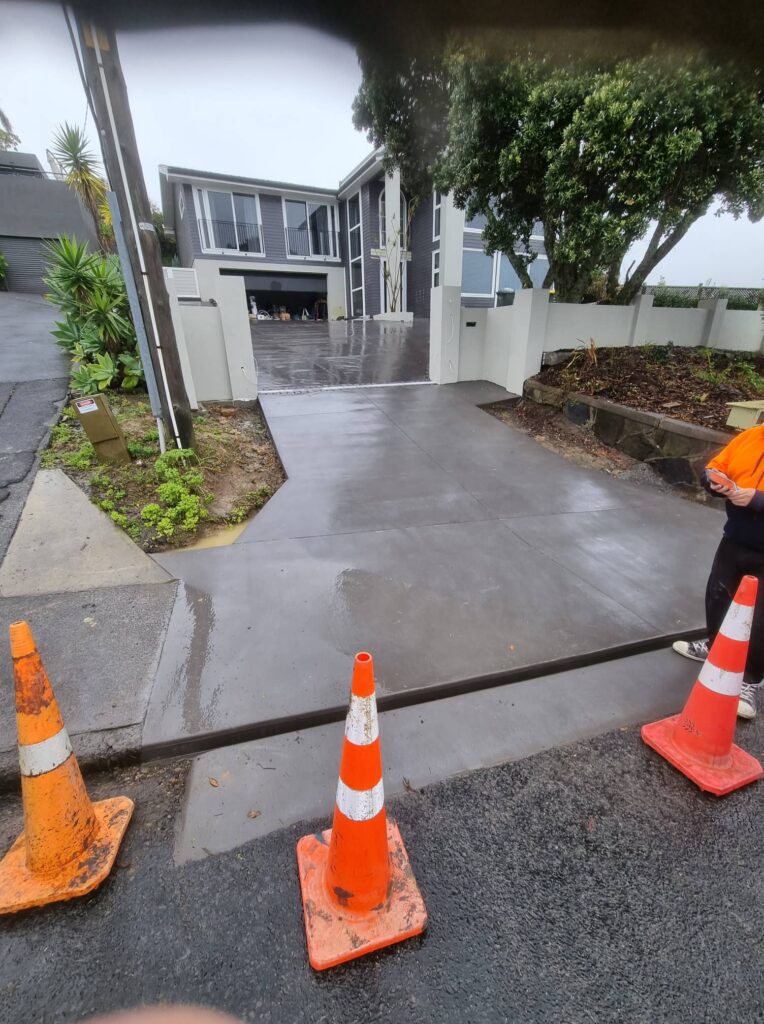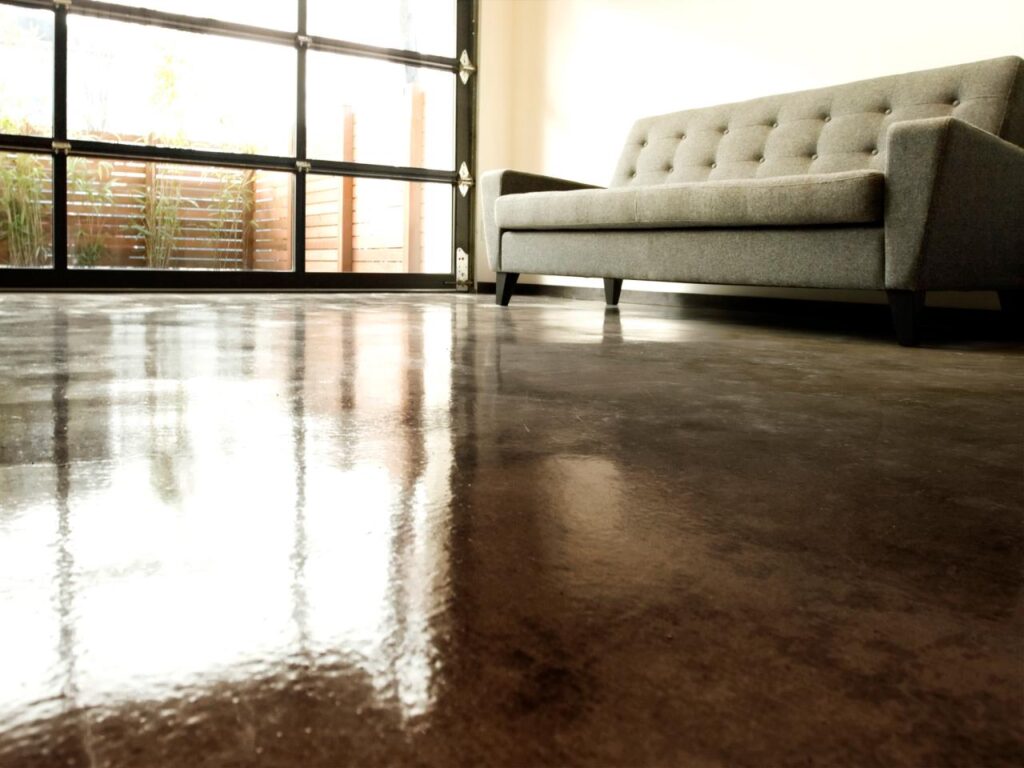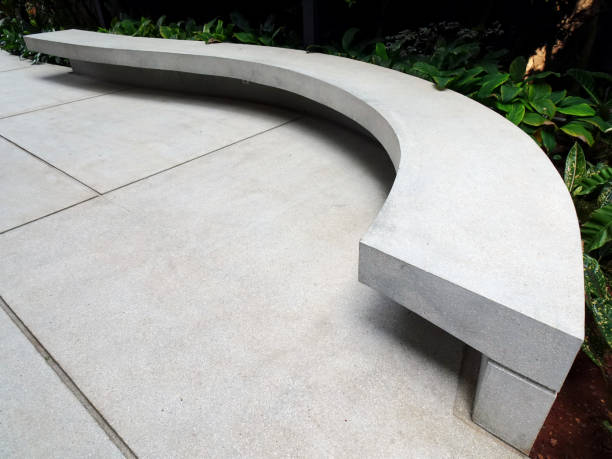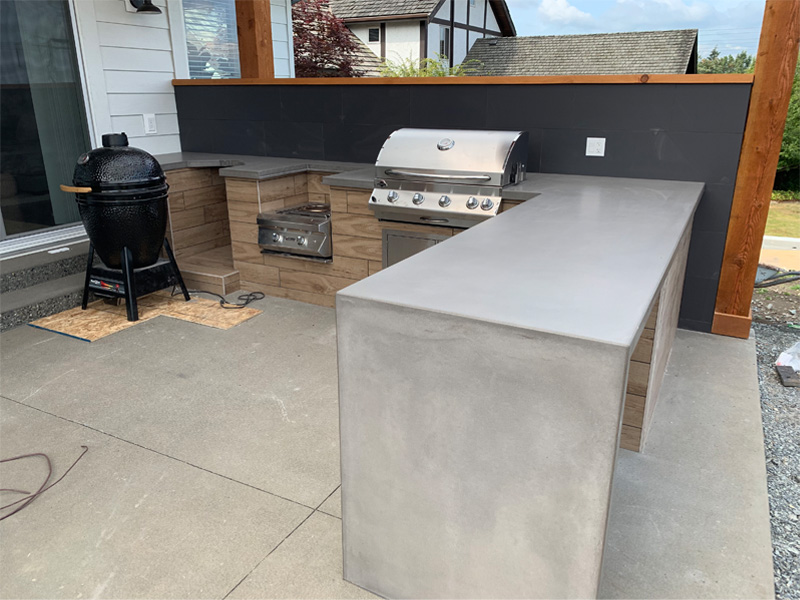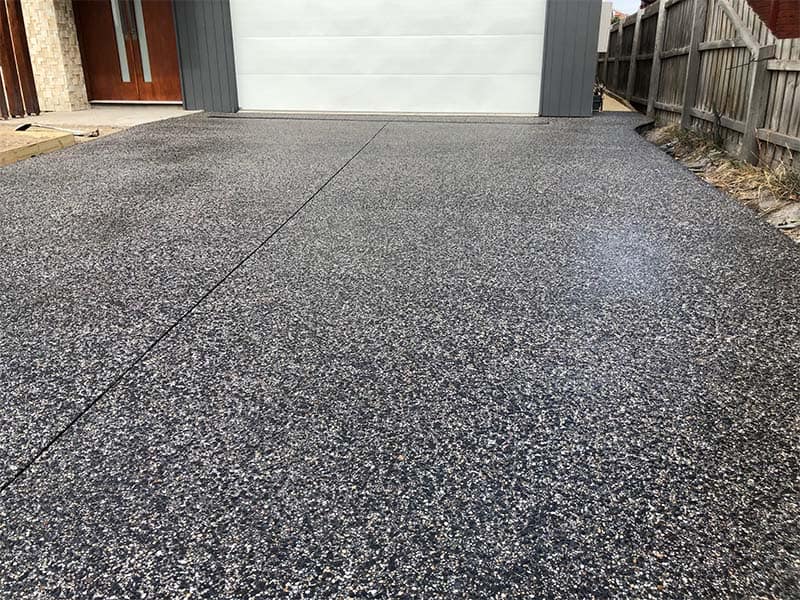Calculating the coverage of a 20kg bag of concrete is an essential step for many construction and DIY projects. When working with concrete, it’s important to know the exact amount required to avoid wastage and ensure a strong, durable end result. This article provides insights on the factors that affect concrete coverage and offers guidance to help you accurately estimate the coverage of a 20kg bag of concrete for your specific project.
One of the primary factors in calculating concrete coverage is the mix ratio. Different projects require varying mix ratios, which in turn influence the yield of the concrete. Knowing how to properly mix your concrete can significantly impact its performance, longevity, and ultimately, the coverage provided by a 20kg bag. Furthermore, understanding how different bagged concrete sizes and weights relate to coverage will aid you in choosing the most suitable product for your project.
Key Takeaways
- Estimate concrete coverage accurately to minimize waste and ensure durability.
- Mix ratios play a crucial role in influencing concrete yield and coverage.
- Familiarizing yourself with various concrete product sizes and weights aids in project planning.
Understanding Concrete
Concrete is a widely used building material made from a mixture of cement, aggregate, sand, and water. When these components are combined, they form a paste that hardens over time, gaining compressive strength and durability. In your construction projects, you might often find yourself in need of calculating how much concrete is needed and how far a 20kg bag of concrete will cover.
Cement acts as the primary binder in concrete, connecting the aggregate and sand particles to create a solid mass. You should be aware that cement is a powdery substance made from limestone, clay, and other minerals. On the other hand, the aggregate is made up of crushed stone, gravel, or recycled concrete, adding strength and bulk to the mixture. Meanwhile, sand serves as a fine aggregate, filling in gaps between the coarser particles and contributing to the overall strength.
In addition to these main components, admixtures may be added to the concrete mix to modify its properties. Some admixtures can alter the workability, curing time, or even the compressive strength of the final product. Being familiar with these additives helps you choose the right mix for your specific requirements.
The compressive strength of concrete is an essential factor to consider when determining the application and thickness required for your project. It is typically measured in megapascals (MPa) or pounds per square inch (psi). Higher compressive strength implies a more robust and resilient concrete mix, capable of withstanding greater loads and pressures.
When dealing with a 20kg bag of concrete, be aware that the coverage it provides depends on the desired thickness and the specific concrete mix you choose. The packaging of the product should provide guidelines on the coverage area, based on different thicknesses and mix ratios. By carefully following these instructions, you can ensure that your concrete project meets the required standards for strength, durability, and coverage.
Bagged Concrete Sizes and Weights
When you’re looking to purchase bagged concrete, it’s essential to understand the different sizes and weights available to estimate coverage. Bags of concrete typically come in 10kg, 20kg, 25kg, 30kg, 35kg, and 40kg sizes. While each size will yield different coverage, this section will primarily focus on the 20kg bag and its applications.
A 20kg bag of concrete mix is a popular choice for small to medium-sized projects, as it is easy to handle and transport. The volume of concrete you obtain from a 20kg bag depends on the brand and product you choose, as different mixes have varying densities. Generally, one 20kg bag of concrete mix is sufficient to produce approximately 0.01 cubic meters of concrete when mixed with an appropriate amount of water. The actual coverage will depend on the thickness of your application.
With a 25kg bag of concrete mix, you can expect a slight increase in volume, typically around 0.012 cubic meters. Similarly, 30kg and 35kg bags will yield roughly 0.015 and 0.017 cubic meters, respectively. For larger projects, a 40kg bag may be more suitable, offering about 0.020 cubic meters of concrete.
When estimating the number of bags needed for your project, consider the following:
- Project area: Measure the length and width of the area to calculate the square footage. Divide this value by the coverage provided by a single bag to estimate the number of bags required.
- Thickness: Determine the desired thickness of your application, as thicker layers will require more bags of concrete mix.
- Mixing ratio: Follow the manufacturer’s recommended mixing ratios to ensure proper strength and consistency in your finished product.
By keeping these factors in mind, you can confidently estimate the quantity of bagged concrete necessary for your specific project, ensuring you achieve the best results when working with this versatile and essential building material.
Coverage Calculation
When calculating the coverage of a 20kg bag of concrete, you’ll need to determine the required depth, length, and width for your specific project. Knowing these dimensions allows you to accurately estimate the amount of concrete you’ll need and ultimately helps you determine how many 20kg bags are necessary.
First, it’s essential to establish the desired depth, length, and width for your project in meters. For instance, assume you’re working on a small concrete slab with a length of 2 meters, a width of 1 meter, and a depth of 0.1 meters.
Next, calculate the volume of concrete required by multiplying the depth, length, and width:
volume (cubic meters) = depth × length × width
In our example, the volume would be 0.2 cubic meters (0.1 × 2 × 1).
To determine the amount of concrete needed in liters, multiply the volume in cubic meters by 1000, as there are 1000 liters in a cubic meter:
volume (liters) = volume (cubic meters) × 1000
For our example, we’ll need 200 liters of concrete (0.2 × 1000).
Now that we have the volume in liters, we can estimate how many 20kg bags of concrete are required. Manufacturers typically provide information on the approximate coverage per bag on the packaging or their website. Let’s assume a 20kg bag of concrete covers about 10 liters when mixed with water at the recommended ratio:
number of bags = volume (liters) ÷ coverage per bag
In our case, we’ll need 20 bags of 20kg concrete (200 ÷ 10).
It’s important to note that coverage may vary depending on factors such as the concrete mix, desired consistency, and actual dimensions of your project. It’s always advisable to purchase a few extra bags to account for potential discrepancies in calculations or errors during the project.
For those who prefer to work with other units, remember to convert the units to ensure consistency throughout the calculation:
- 1 cubic meter = 35.31 cubic feet or 1.31 cubic yards
- 1 square meter = 10.76 square feet
- 1 liter = 0.001 cubic meters or 0.0353 cubic feet
By following these steps and considering the specific requirements of your concrete project, you can confidently calculate the coverage for a 20kg bag of concrete and avoid over or underestimating the amount needed.
Concrete Mix Ratios and Yield
When working with a 20kg bag of concrete, understanding the mix ratios and yield is crucial for achieving the desired coverage. The yield of a concrete mix refers to the volume of concrete that can be produced from a specific quantity of materials, including cement, gravel, sand, and water.
Ready mix concrete is often a convenient option for small to medium-sized projects. It comes pre-blended with all the necessary ingredients, including Portland cement, sand, and gravel. The bag size, usually marked in kg, indicates the weight of the mixture, while the mix ratio specifies the proportions of the ingredients.
For most applications, a standard mix ratio of 1:2:3 is used, which means 1 part cement, 2 parts sand, and 3 parts gravel. In the case of a 20kg bag, you would mix it with approximately 40kg of sand and 60kg of gravel. When it comes to water, adding roughly 6-7 liters is recommended to achieve the right consistency.
Here’s a simple breakdown of the mix:
- 1 part Portland cement
- 2 parts sand
- 3 parts gravel
- 6-7 liters of water
If you’re working with a blended mix that contains additives or other materials, be sure to consult the manufacturer’s specific recommendations for mix ratios.
The yield of the concrete mainly depends on the bag size, mix ratio, and the amount of water added. A 20kg bag of ready mix concrete may typically yield around 10-11 liters of mixed concrete. It’s crucial to follow the recommended mix ratios and use the correct amount of water to ensure the concrete sets correctly and achieves its intended strength.
Keep in mind that the actual coverage of a 20kg bag of concrete can vary depending on factors like surface conditions, thickness of the pour, and any additives used in the mixture. Always double-check the manufacturer’s recommendations and be prepared to make adjustments as needed to achieve the desired results.
Remember, having a good understanding of concrete mix ratios and yield will help you successfully complete your project and ensure a strong, durable result.
Determining Coverage for Specific Projects
When working with a 20kg bag of concrete, it’s essential to understand how much coverage you can achieve for particular projects. As the amount of concrete needed varies depending on factors like thickness, project size, and specific type.
For example, when constructing a slab, a 20kg bag of concrete can typically cover an area of up to 0.018 cubic meters (18 liters). To determine the coverage for your specific project, follow this formula:
Area (square meters) = (Volume in liters) / (Thickness in millimeters * 0.001)
Applying this formula for different projects like a driveway, road, or patio, adjust the thickness and dimensions according to the specific requirements.
For more complex constructions such as a bridge, beam, or dam, coverage calculation is critical to ensure structural safety. In these cases, consulting an engineer or an expert in the field is highly recommended.
Projects like a path, pavement, retaining wall, and sidewalk may require less concrete in comparison to other structural projects. Still, determining the right amount of coverage ensures the longevity and durability of these constructions.
When working with columns, it is best to calculate the volume first by using the following formula:
Volume (cubic meters) = π * (Radius in meters)^2 * Height in meters
After finding the volume, identify the number of 20kg bags needed by dividing the total volume in liters (since 1 cubic meter = 1000 liters) by the volume covered by the 20kg bag (18 liters).
Keep in mind that concrete often requires reinforcement, especially for large or heavy-load bearing projects. To achieve optimal results, always adhere to the recommended specifications for each project.
By considering the aspects mentioned above, you can confidently and efficiently calculate how much coverage a 20kg bag of concrete will provide for your specific project needs.
Concrete Calculator Tools
When working with concrete, it’s essential to calculate the appropriate amount for your project. Concrete calculator tools come in handy for this purpose. They help estimate the number of 20kg bags required, considering the dimensions and concrete mix ratio.
You can find various concrete calculator tools online, which allow you to input the dimensions of your structure (length, width, and thickness) and specify the unit of measurement, such as cubic meters, cubic yards, or cubic inches. Some calculators may also provide the option to convert between different units like gallons.
The process of using a concrete calculator is straightforward. Enter the dimensions of your structure and select the appropriate unit of measurement. The tool will then perform the necessary calculations and provide you with the estimated number of 20kg bags needed to cover the specific area.
Keep in mind that the calculator provides an estimation as the actual amount of concrete needed might vary depending on factors like waste, ground conditions, or compaction. It’s always a good idea to add an extra 10% to the estimated quantity to account for any discrepancies.
Many concrete calculators also offer additional features or options. Some might allow you to choose between standard concrete mix ratios, while others might let you customize the mix ratio based on your project requirements.
By accurately calculating the required amount of concrete, you can avoid overspending on excess material or running out of concrete during the project. Make sure to measure your structure carefully and use a reliable concrete calculator tool to ensure a successful outcome.
Real World Application and Considerations
When working with concrete in construction projects, both residential and commercial, a 20kg bag of concrete mix is a common choice for builders. To determine the coverage of a 20kg bag, you must first consider factors like the desired thickness of the concrete layer, type of project, and intended purpose.
At the base level, knowing the weight of concrete and its density is essential. Concrete’s density can vary depending on the type of mix, but a general rule of thumb is to assume a density of approximately 2400kg per cubic meter. With this information, you can calculate the volume of concrete in your 20kg bag by dividing the weight by the density (20kg / 2400kg/m³ ≈ 0.00833m³).
For applications such as roadways, bridges, and buildings, measurements and thickness requirements can vary. In residential projects like constructing a walkway or patio, a common thickness is 100mm (0.1 meters). Using this value, you can estimate the area that a single 20kg bag of concrete will cover by dividing the volume by the thickness (0.00833m³ ÷ 0.1m ≈ 0.0833m²). For commercial projects, consult specific guidelines and regulations to ensure the appropriate thickness and coverage.
In your construction project, you may need to use additives like accelerators and reducers to modify the setting speed of your concrete mix. These agents can affect the final coverage and the overall cost of the project. Remember to account for them when budgeting and planning.
Purchasing concrete in bulk bags is another option to consider when working on large-scale projects. Bulk bags typically provide cost savings and can help minimize waste during the construction process.
In conclusion, the coverage of a 20kg bag of concrete depends on various factors such as the type of project, desired thickness, and any additives used in the mix. Always adhere to industry standards and guidelines to produce structurally sound and safe outcomes.
About the Author:
Mike Veail is a recognized digital marketing expert with over 6 years of experience in helping tradespeople and small businesses thrive online. A former quantity surveyor, Mike combines deep industry knowledge with hands-on expertise in SEO and Google Ads. His marketing strategies are tailored to the specific needs of the trades sector, helping businesses increase visibility and generate more leads through proven, ethical methods.
Mike has successfully partnered with numerous companies, establishing a track record of delivering measurable results. His work has been featured across various platforms that showcase his expertise in lead generation and online marketing for the trades sector.
Learn more about Mike's experience and services at https://theleadguy.online or follow him on social media:
